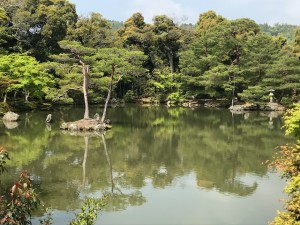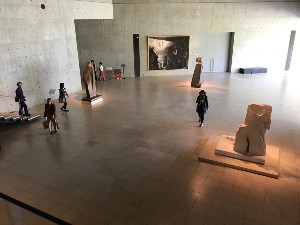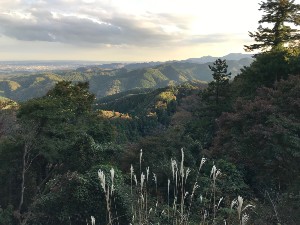The Edo Tokyo Open Air Architecture Museum

A few years ago I visited the Edo-Tokyo Museum in Ryogoku, and it was a delight. The displays of the most well known Japanese customs was unmatched in Tokyo. But unfortunately it closed down for renovations, and won't be open again until the spring of 2026. So is there anything like it in Tokyo? Yes, there is!
The Edo Tokyo Open Air Architecture Museum is first and foremost a museum that features buildings. It does not feature the detailed descriptions about Edo life like the Edo-Tokyo Museum had on display. That is not a criticism - after all, its focus is on Edo era architecture. But there is an cultural overlap of coverage in these two stellar museums, and that is not a bad thing. I would say that these two museums complement each other quite well, and should be on your short list to visit.
This unique architecture museum was created in 1993 to preserve certain buildings in and around Tokyo that were under risk of falling in disrepair, or even demolition. The outdoor museum grounds cover roughly 17 acres, and is situated inside Koganei Park.
The museum buildings are divied up into three groups - the West Zone, the Center Zone, and the East Zone.

In addition, there are some outdoor exhibits that are worth checking out too. Here are a few notable buildings to explore.
House of Okawa in Den’enchofu
This western style house was built in 1925 in Den’enchofu, Ota Ward. One of Tokyo’s residential suburbs, Den’enchofu was a new community at the time that eventually became one of Tokyo's most prestigious and exclusive neighborhoods.
Sakae Okawa, a civil engineer at the Ministry of Railways, was the first owner. He and his wife, their two children, and a total of 5 maids lived here for an indeterminable length of time. Perhaps the record of each owner is in the Ota-ku registry.
A modern structure at the time, its architect, Michio Mitsui, used home design concepts from the United States and Europe in the design of Okawa's new home.
Michio Mitsui's father, Michiro Mitsui, was a priest of Nikolai-do, and Sakae Okawa was also a believer in Nikolai-do. So, he asked Michio Mitsui to design it for him. Mitsui worked at Shinichiro Okada's architecture firm. Okada was a well know architect during that period in Tokyo.
What distinguished this unique (at the time) wooden one-story building from typical Japanese homes was its layout, with the entrance hall, dining room, bedroom, study, and burgola all arranged around the living room.
The home was occupied by various families up until 1993, when it was donated to the museum because of its architectural significance.




Jisho-in Mausoleum
Built in 1652, Jisho-in Mausoleum was commissioned to be constructed by Princess Chiyo to pay tribute to her mother, Ofuri-no-kata, the concubine of the 3rd Shogun Tokugawa Iemitsu. Princess Chiyo was the wife of Mitsutomo Tokugawa, the second lord of the Owari Domain.
She entered Ooku as the adopted daughter of Kasuga no Kobu, and in 1636, Iemitsu became her first concubine.
Ofuri-no-kata was the daughter of Oka Shigemasa, a retainer to Gamô Hideyuki, and entered the Ôoku as the adopted daughter of Lady Kasuga in 1626. The Ôoku are the quarters in Edo Castle where the women related to the Shogun family resided.
Lady Kasuga was Japanese noble lady and politician that was one of the most powerful women of the era. She was a wet nurse to Iemitsu. and years later was one of his key political supporters.
In 1637, Ofuri-no-kata gave birth to Princess Chiyo. Following Ofuri-no-kata's death in 1640, she was given the posthumous Buddhist name Jishô-in, hence the name of the mausoleum. Because her mother died when she was only three years old, Princess Chiyo never really knew her. Nonetheless, the princess felt compelled for reasons unknown to construct the shrine to her mother when she was only fifteen years old, with the guidance of her father Tokugawa Iemitsu.
The structure was built by Kōra Muneyoshi, a master builder of the Tokugawa Shogunate. It was built in the Tomihisa-cho, Shinjuku Ward.
In my research of this building I discovered one source that said the mausoleum had been moved to Koshuin in Yanaka, and then after the war it was acquired by Seibu Railway and moved to the grounds of the future Akasaka Prince Hotel in Kioi-cho. When it came time to build the hotel, the mausoleum was disassembled and stored in a warehouse for many years. Subsequently Seibu Railway donated the structure to the architecture museum where it is today. I have no idea of this is true, but it is certainly interesting and believable.


House of Koide
The House of Koide is a wooden two-story house, originally built in present-day Nishikata in Bunkyō Ward, Tokyo in 1925 for the homeowner Osamu Koide and his wife Koto as a vacation home for their family.
This house was the first building that architect Sutemi Horiguchi designed. Horiguchi was a leader of Bunriha Kenchiku Kai ("Secessionist Architecture Group"), Japan’s first modern architecture movement, founded in 1920. Their efforts was a departure from the styles that had become popular in Japan since the late 19th century, influenced by the English architect Josiah Conder.
The new modernist architecture movement fused both modern architectural and traditional Japanese architectural motifs into a cohesive and attractive, yet simple, design.
The Secessionist Architecture Group emulated the broad design concepts of Vienna Secessionists that they learned about in school. The Vienna Secessionists were a group of artists and architects who broke with traditional art institutions in Vienna in 1897.
Horiguchi traveled to Europe in 1923 for six months, where he was able to study the architecture in person that he had previously learned about in school. His main focus was to see the work of the Vienna Secessionists, and to bring design ideas back to Japan.
In September 1924, Horiguchi was requested to design the House of Koide. In June the next year, the House of Koide was completed as Horiguchi's first residential project.
It is said that this house was influenced by the Dutch modernism movement, and is blended with Japanese styling through the use of traditional Japanese construction methods. From outside, the home looks like it’s design primarily reflects that of European modernism, but the inside is in a traditional Japanese design with some modern features incorporated to give it a unique look.
In 1997, the House of Koide was moved and reconstructed at the architecture museum, and essentially restored it to its original state. In March 2019, the home's value was recognized as “a precious work that presents the rise of the Japanese Modernism Architecture," and thus was designated as a Tangible Cultural Property.





The Shopping Street
Finally, I would be remiss to not mention that there is a rather awesome shopping street of the Edo period in the East Zone. Check out all the period shops! Here are a few pictures to entice you to check it out.



Ok then, that should give you and idea of what you can see at this delightful outdoor museum. Hope you enjoy it!
Flash Card Drill
- The renovations to the office building increased its market value significantly. オフィスビルの改装は、その市場価値を大幅に引き上げました。
- They completed the renovations just in time for the new tenants to move in. 新しい入居者が引っ越すために、改装はちょうど間に合いました。
- The museum’s new exhibit focuses on the principles of modernism in architecture. 博物館の新しい展示は、建築におけるモダニズムの原則に焦点を当てています。
- Modernism has influenced many forms of art and literature. モダニズムは多くの芸術や文学の形式に影響を与えてきました。
- He is one of the foremost experts in renewable energy. 彼は再生可能エネルギーに関する最も重要な専門家の一人です。
- The foremost challenge we face is climate change. 私たちが直面している最も重要な課題は気候変動です。
- The team worked well because they had a cohesive plan. チームは結束した計画を持っていたので、うまく機能しました。
- Cohesive communities can help to support their members. 結束したコミュニティはメンバーをサポートするのに役立ちます。
- The demolition of the old school building began last week. 古い学校の解体は先週始まりました。
- Demolition work can create a lot of dust and noise. 解体作業は多くの埃と騒音を生み出すことがあります。
- The time of the event remained indeterminable until the last minute. イベントの時間は最後の瞬間まで決定できないままでした。
- Many factors made the outcome indeterminable at that time. 多くの要因がその時点で結果を決定できないものにしました。
- The secessionist movement has been gaining support among local communities. 脱退派の運動は地元コミュニティの間で支持を得てきています。
- Secessionist sentiments often arise in times of political tension. 脱退派の感情は政治的緊張の時にしばしば生じます。
- The retainer helped manage the household affairs of the noble family. 家来は貴族の家の家事を管理するのを助けました。
- He hired a retainer to assist with his legal matters. 彼は法的な問題を手伝うために家来を雇いました。
- She felt compelled to speak out against the injustice. 彼女は不正に対して声を上げることを強制されるように感じました。
- He was compelled to resign due to personal reasons. 彼は個人的な理由で辞任を強制されました。
- She felt remiss for not helping her friend when he needed it. 彼女は友人が必要としているときに助けなかったことが怠惰だと感じました。
- The advertisement was designed to entice customers to buy the product. その広告は顧客を製品を購入するように誘惑するために作られました。
- The smell of freshly baked cookies can entice anyone to come inside. 焼きたてのクッキーの香りは誰でも中に入るように誘惑できます。






































